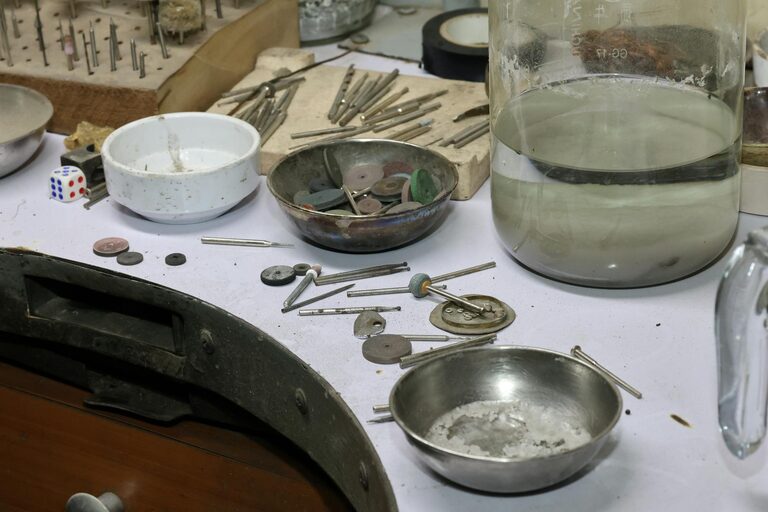Creativity is often seen as a special gift, reserved for artists, writers, or designers. However, everyone has creative potential, and it can be developed with simple, daily practices. Whether you want to solve problems at work more effectively, find new hobbies, or just enrich your life, fostering creativity can make a big difference. In this post, we’ll explore practical and easy ways to incorporate creativity into your daily routine.
Why Practice Creativity Every Day?
Creativity isn’t just about making art. It involves thinking differently, connecting ideas, and finding new solutions. Practicing creativity regularly helps:
– Enhance problem-solving skills
– Reduce stress and improve mental health
– Increase productivity and motivation
– Build confidence and open-mindedness
By making creativity a daily habit, you can enjoy these benefits and bring fresh perspectives to various parts of your life.
Simple Daily Practices to Spark Creativity
1. Keep a Creativity Journal
Dedicate a small notebook or a digital document to jot down ideas, observations, dreams, or even random thoughts. Writing regularly helps train your brain to recognize creative moments and develop them further.
Tips:
– Write just a few sentences daily.
– Sketch or doodle if words don’t come easily.
– Review your notes weekly for ideas you might want to explore.
2. Practice Mindfulness and Observation
Creativity often springs from being fully present and noticing details others might miss. Spend a few minutes each day practicing mindfulness by paying attention to your surroundings or your breathing.
How to practice:
– Take a short walk and note the colors, sounds, or smells.
– Focus on one object and observe its shape, texture, or patterns.
– Use a meditation app to guide you through simple mindfulness exercises.
3. Try Daily Creative Challenges
Set small creative challenges that push you slightly beyond your comfort zone. These can be quick and enjoyable tasks to get your creative juices flowing.
Examples:
– Write a six-word story.
– Take a photo of something unusual.
– Sketch an object on your desk.
– Create a new playlist with diverse music genres.
4. Limit Screen Time and Digital Distractions
Constant screen time can overwhelm your mind, leaving little room for original thinking. Try to reduce digital distractions during certain parts of your day to allow your mind to wander and generate ideas.
Suggestions:
– Designate “no-phone” periods.
– Turn off push notifications.
– Replace some screen time with reading or outdoor activity.
5. Experiment with Different Mediums
Creativity is not limited to one form of expression. Trying different mediums stimulates different parts of the brain and sparks new ideas.
Examples to try:
– Cooking or baking with new recipes.
– Playing a musical instrument or learning one.
– Crafting, sewing, or DIY projects.
– Creative writing or poetry.
6. Learn Something New Regularly
Engaging your mind with new skills or knowledge can inspire creative thinking. It encourages you to make connections between different fields or cultures.
Ideas:
– Watch documentaries on topics you don’t know.
– Learn a few phrases in a foreign language.
– Take online workshops or tutorials.
7. Surround Yourself with Inspiration
Your environment plays a big role in your creativity. Make your space visually stimulating and filled with things that inspire you.
Tips:
– Add plants, artwork, or colorful objects to your workspace.
– Keep quotes or photographs that motivate you nearby.
– Rotate your decorations occasionally to refresh your view.
8. Collaborate and Share Ideas
Working with others or discussing ideas can spark creativity you might not discover on your own. Sharing your thoughts encourages feedback and new perspectives.
Ways to collaborate:
– Join online creative communities or local groups.
– Participate in brainstorming sessions at work or school.
– Share your projects and invite constructive comments.
9. Embrace Mistakes and Playfulness
Creative work is often about trial and error. Allow yourself to experiment without fear of failure. Playfulness reduces pressure and opens up new possibilities.
How to foster playfulness:
– Set aside time for unstructured, fun activities.
– Use prompts or games to guide your creative efforts.
– Celebrate your efforts, not just the outcomes.
10. Set Aside Time for Reflection
Reflecting on your experiences and creative practice helps deepen your understanding and fuels future ideas.
Reflection methods:
– End your day by reviewing what you created or noticed.
– Write about what inspired you or what challenged you.
– Plan ways to continue growing creatively.
Final Thoughts
Creativity isn’t a trait you either have or don’t—it’s a skill you can nurture every day. By integrating simple habits like journaling, mindfulness, and experimentation into your routine, you’ll gradually open doors to new ideas and self-expression. The key is consistency and an open, curious mindset. So start small, be patient, and enjoy the creative journey!
Remember, each creative moment adds up to a more vibrant, imaginative life. Why not begin today?

